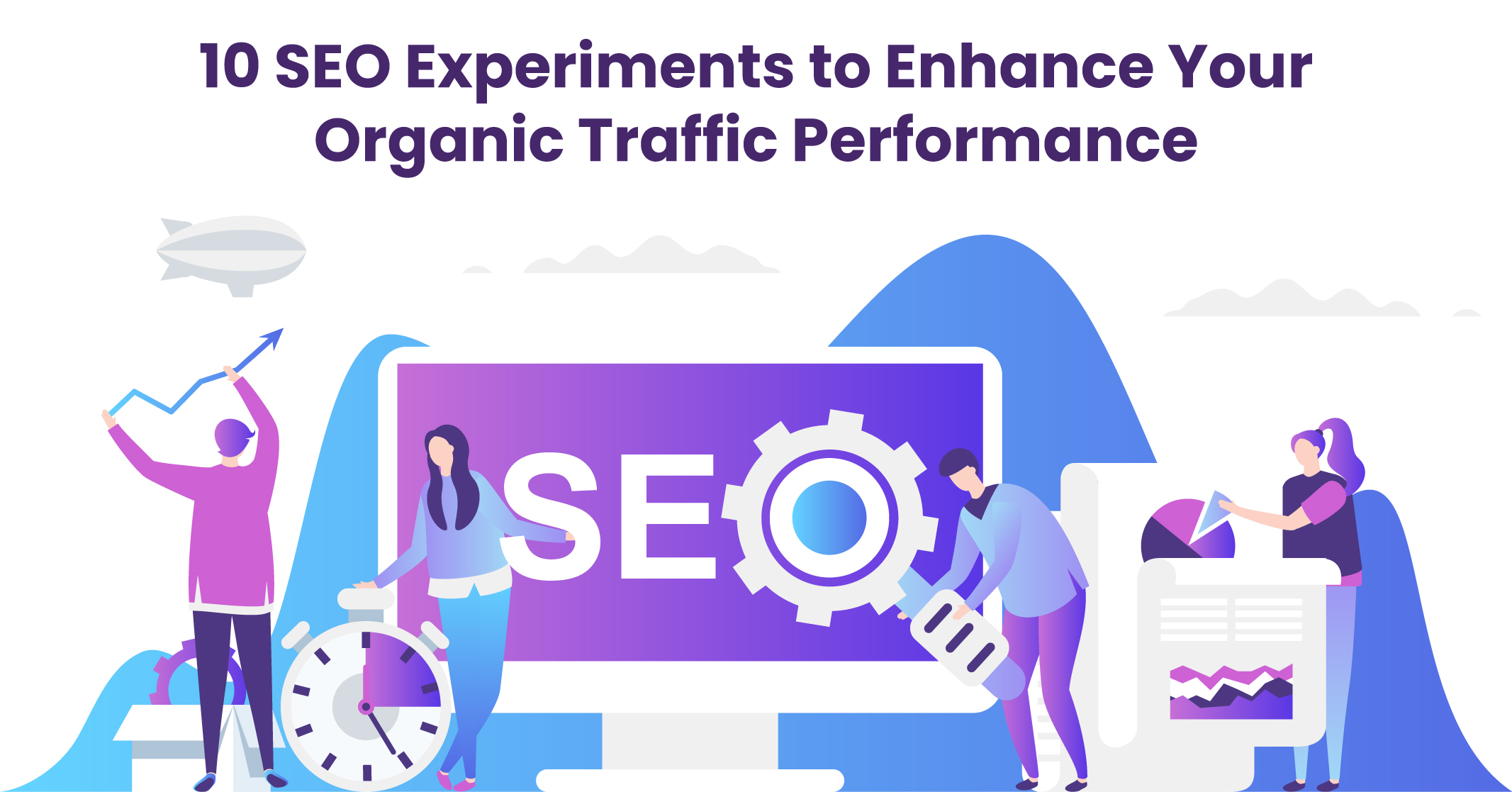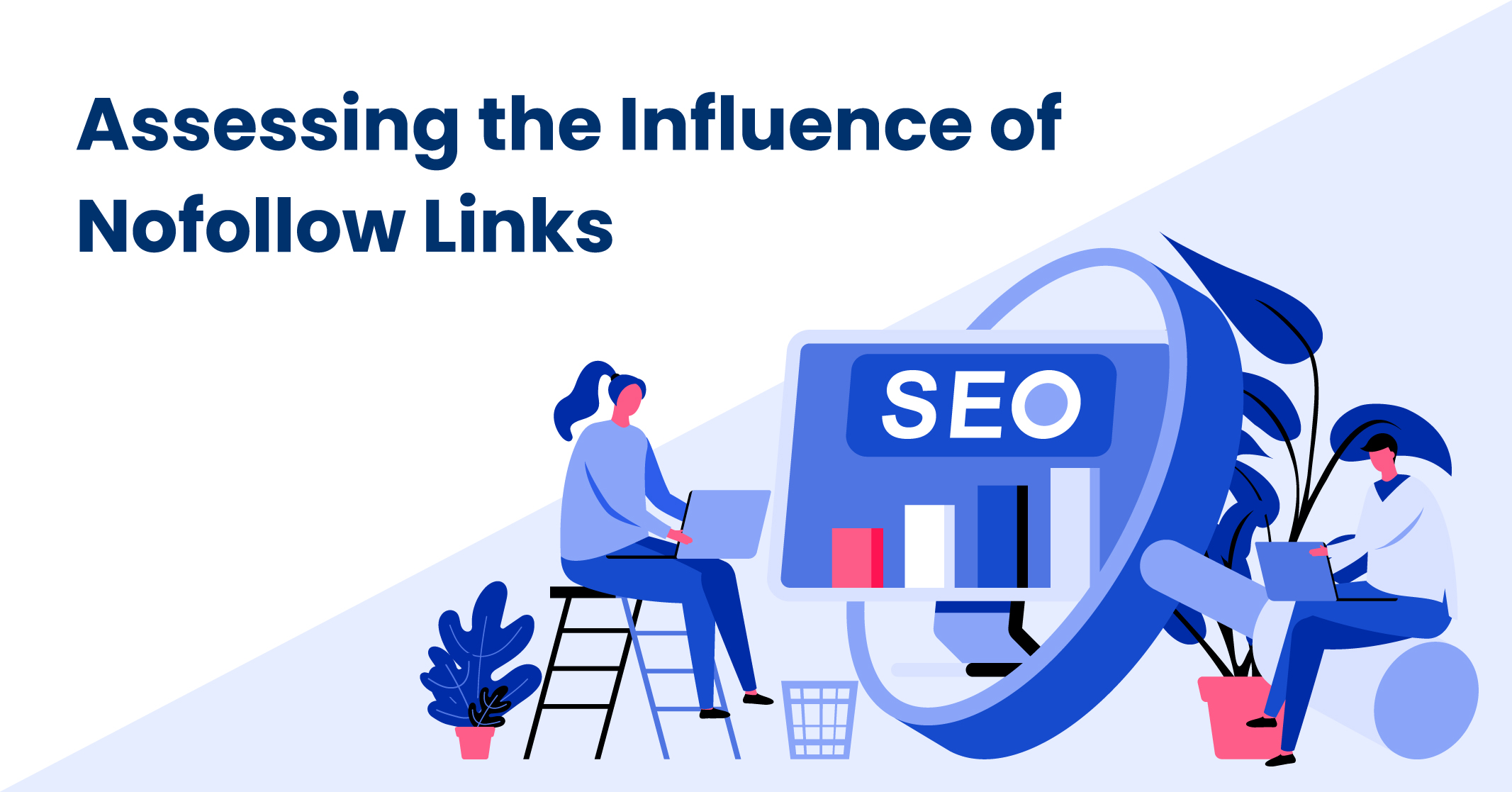I hope you enjoy reading this blog post.
If you want to get more traffic, Contact Us

Click Here - Free 30-Minute Strategy Session
Be quick! FREE spots are almost gone for this Month. Free Quote

SEO is a powerful tool for driving consistent and valuable traffic to your website. Higher positions on Google’s search engine results pages (SERPs) translate to increased click-through rates and business growth. However, simply attempting to boost your rankings is not enough; you must employ SEO tricks to succeed.
Each business is unique, and its SEO strategies should be tailored accordingly. While there are no one-size-fits-all solutions, conducting regular SEO experiments is a reliable way to determine the most effective strategies for your business and gain a competitive advantage. Let’s explore how to perform successful SEO tests and unlock the potential of SEO for your website.

Click Here – Free 30-Minute Strategy Session
Be quick! FREE spots are almost gone for this Month
SEO experimentation is a vital process in digital marketing where distinct SEO strategies are tested to identify the most effective ones. It involves collecting data, creating informed hypotheses and conducting experiments to optimise SEO efforts.
For instance, one area of focus could be incorporating long-tail keywords into the marketing strategy to attract targeted traffic. Other aspects to experiment with include:
These experiments aim to enhance search rankings, increase web traffic and drive conversions.
Simply put, SEO experimentation involves testing various strategies to optimise SEO effectively.
When it comes to SEO experimentation, there are several useful tools available. Here are some popular ones:
When selecting an SEO experimentation tool, consider the size and complexity of your website, as well as your budget and the specific features each tool offers.
As for SEO testing examples, A/B testing is commonly used to compare different versions of a website or specific elements to determine their impact on various metrics. This method helps optimise SEO processes, enhance user experience and boost conversions.

Running consistent SEO experiments is crucial to determine effective methods for your business. To conduct reliable tests, it’s essential to follow the scientific method:
It’s important not to skip any of these steps to ensure the test’s reliability and make informed changes based on the results.
A common method for SEO testing is A/B testing. It involves setting up two scenarios with only one difference and simultaneously testing them to identify the better-performing option.
A/B testing is more effective than comparing different pages at different times, as time variations may lead to inconsistent results. A/B testing allows you to make practical assumptions about the impact of content on rankings.
Now that you understand the scientific method and A/B testing, you can conduct your experiments. Here are 10 SEO testing examples you can try:
By conducting these SEO experiments, you can gain valuable insights to optimise your strategies and improve search rankings.

Nofollow links, despite being disliked by some marketers, can yield positive results for websites. Many online case studies and websites have reported remarkable outcomes from utilising nofollow links, leading to improved web traffic and rankings.
However, to truly understand how nofollow links impact your website, it is essential to generate a few and conduct tests.
A useful tool for identifying websites that use nofollow links is the NoFollow Chrome extension. This extension highlights active nofollow links with a red dotted line. By visiting a publication, you desire a backlink from and observing if their hyperlinks are marked with the red line, you can find suitable places to host your nofollow link.
Once you secure a backlink from the publication, closely monitor the performance of your rankings, paying particular attention to any improvements in the ranking of the page with the backlink. It is advisable to refrain from generating additional backlinks during the duration of the experiment to obtain reliable results with fewer variables.
By running these tests, you can gain valuable insights into the impact of nofollow links on your SEO strategy and potentially uncover effective tactics to enhance your rankings.
Social media not only helps businesses reach new audiences and drive leads, traffic, and revenue, but it also has an impact on SEO. Social signals play a significant role in SEO rankings and generating consistent social signals for your website can potentially boost your rankings.
Google considers social media activity as a measure of your online presence beyond just maintaining an updated website. By actively engaging on social media platforms, you demonstrate to Google that you are an active participant in the online sphere.
Producing social signals doesn’t have to be complex. One simple approach is to promote your blog posts on social media, as demonstrated in the examples provided. By sharing your content and encouraging engagement, you can effectively demonstrate your online activity to search engines like Google.
You can even turn your social signals into an experiment. Increase your social media posting frequency for a couple of weeks and observe how it impacts your rankings. The influence of social media accounts on SEO may pleasantly surprise you.
Harnessing the power of social media and incorporating it into your SEO strategy can contribute to improved visibility and organic rankings for your website.
Choosing the right target keywords for your business involves considering both their search volume and the intent behind them. It’s not just about the number of searches but understanding what people are looking for when they use those keywords.
Different search queries indicate different intentions. For instance, someone searching for “best running shoes for women” has a different intent than someone searching for “history of running shoes.” Understanding user intent is crucial in driving meaningful results for your business.
To maximise your return on investment (ROI) and overall revenue, focus on targeting keywords that align with the intent of your high-value audience. These are the keywords that bring in customers, leads and relevant traffic.
To identify the most lucrative keywords for your business, conducting SEO experiments is recommended. Ask yourself questions like:
By analysing the performance of different keywords in terms of customer acquisition, lead generation, and traffic, you can optimise your keyword targeting strategy to achieve better results.
Google’s Accelerated Mobile Pages (AMP) have become increasingly important in today’s mobile-centric landscape. AMP is designed to improve speed and performance by stripping down web pages to their essential elements.
Given Google’s emphasis on mobile-friendly pages, it is essential to conduct this experiment if you haven’t already developed a mobile-friendly website. As more users browse the internet on smartphones, Google aims to ensure a seamless search experience.

When was the last time you checked your website’s loading speed? Many marketers overlook this aspect, assuming it’s the responsibility of the development team. However, website speed directly affects your Google ranking and user experience, making it crucial for marketers to prioritise.
A faster load speed is better, both for SEO and for user satisfaction. Slow-loading websites frustrate users who seek quick answers or entertainment. Waiting for more than a few seconds is undesirable for everyone.
Testing your website’s load speed is easy with tools like Pingdom. Simply enter your URL and click “START TEST” to receive a performance score. For example, socialmediaexaminer.com received a score of 78 on my test.
If your website receives a low grade (F, D, or C), consider reducing file sizes and optimising your code to improve performance. Faster and smoother website performance leads to lower bounce rates and improved rankings.
Testing your load speed is essential to avoid missing out on a good SERP position due to an easily fixable issue. Take the time to optimise your website for speed and enhance the user experience.
Title tags and meta descriptions play a crucial role in attracting clicks to your website from Google’s search results. These snippets act as sales copy, enticing users to choose your result over others. Crafting compelling and concise title tags and meta descriptions is essential for increasing click-through rates and improving your ranking.
On Google, title tags and meta descriptions appear like this:
To optimise your click-through rates and rankings, focus on creating engaging and persuasive content within these elements. Every word should count and capture users’ attention.
Increasing the number of clicks you receive positively impacts your ranking. Aim to be on the right side of the graph, where higher positions are attained.
While it may seem tedious, investing time in testing different meta descriptions and title tags for each piece of content is worthwhile. Conduct experiments to identify which versions receive the most clicks. Replicate successful ones and eliminate fewer effective ones to maximise user engagement.
By consistently refining your title tags and meta descriptions, you increase the chances of people choosing your result over competitors, resulting in improved rankings and click-through rates.
Keywords are essential for optimising your content, but focusing solely on primary keywords may not be enough to improve your rankings. Incorporating latent semantic indexing (LSI) keywords can make a difference.
LSI keywords should complement your primary keywords and existing content. They provide additional context and relevance. Google’s suggestions can be a valuable source of LSI keywords. Simply start typing your primary keyword and see the suggested keywords.
To test the impact of LSI keywords on your rankings, choose a web page that already ranks well. Integrate a few LSI keywords into the content. Allow Google time to crawl the page and observe any changes in rankings.
By experimenting with LSI keywords, you can uncover valuable insights. If the rankings improve, you have discovered effective SEO tricks and techniques to enhance your website’s visibility and ranking.
Boosting the rankings of old content may be simpler than you think. By revisiting and making a few changes to your old posts, you can click the “update” button and potentially see improved rankings.
Why is this important? Google prioritises recent results, and the Helpful Content Update emphasises the importance of keeping your content current and relevant.
When you update old content, Google perceives it as recently published, giving it a better chance of ranking higher. This strategy can be especially beneficial when users search for current information.
Many websites, such as Investopedia, regularly update their posts to maintain relevance and freshness.
To determine the effectiveness of updating old content, monitor the changes in your rankings. If you observe improvements, it becomes an effortless method to enhance your rankings and benefit your business.
Structured data markups play a crucial role in getting rich snippets in search results. Adding FAQ schema markups to your web pages can increase the chances of obtaining a featured snippet.
By including relevant questions and answers in an FAQ section, you provide valuable information to your audience in one place. Incorporating high-volume keywords can also impact conversions.
Ubersuggest is a useful tool for uncovering high-value keywords and generating content ideas for your FAQs. For example, if you sell coffee beans, you can use Ubersuggest to understand user intent and craft a relevant FAQ section.
To create effective FAQs, analyse pages that already rank highly and provide helpful information. This can serve as inspiration for your content.
Track the impact of FAQ schema markup by monitoring your page’s position on search engine results pages (SERPs) before and after implementation. If the desired results are not achieved, you can adjust the questions and answers.
How to Conduct SEO?
Conducting an SEO experiment where you deoptimise one page while focusing on optimising another related page can potentially improve the ranking of the optimised page.
This experiment also serves as a test to identify areas of improvement and assess the resilience of your web pages.
Deoptimising certain pages can benefit your website by improving the user experience, enhancing loading speed, and avoiding penalties from search engines.
However, it’s important to approach deoptimisation carefully as it can have negative effects on user experience and website performance if not executed properly.
Choose the pages to deoptimise strategically, monitor the impact consistently, and consider consulting with a web developer or SEO expert for guidance.
To ensure the success of your SEO experiments, it’s crucial to measure the results by tracking key performance indicators (KPIs).
Identify the relevant KPIs based on your hypotheses, such as organic search traffic, click-through rates, bounce rates, or conversion rates.
Establish a baseline by assessing your KPIs before implementing any changes. This provides a reference point for measuring the impact of your experiments.
During and after the SEO experiment, track the selected KPIs using tools like Ubersuggest or Google Analytics to gauge the positive or negative effects of the changes.
Analyse the data to conclude the effectiveness of your tests. This will help you determine whether to revise and retry (in case of failure) or implement the updates on a larger scale (in case of success).
By consistently measuring and analysing KPIs, you can make informed decisions and continuously improve your SEO strategies.
If you’re a camping supplies company marketing team looking to conduct an SEO experiment, you can focus on creating more comprehensive, informative long-form content about your top-selling tents.
Identify the key performance indicators (KPIs) to track, such as organic search traffic, conversion rates, and time on site. Use tools like Google Analytics or Google Search Console to establish baseline metrics before making any changes.
Craft and publish informative blogs or product pages on your website. Monitor the selected KPIs for a defined period (around a month) to compare them with the baseline data and identify any improvements or declines.
If you observe a significant increase in organic traffic, higher conversion rates, and increased user engagement on the site, consider the updates successful. You can then expand this approach to other popular products while continuing to track the same KPIs.
Remember that SEO experiments require time to yield meaningful results. Changes don’t happen overnight, so give yourself ample time to analyse the data and make informed decisions.
By utilising the right tools and dedicating sufficient time, you can effectively conduct SEO experiments and drive improvements for your website.
To run an SEO experiment effectively, it’s important to follow a structured approach. Start by determining the specific aspect you want to test and identify the key performance indicators (KPIs) that will help you measure the experiment’s success.
Implement the changes or optimisations you want to test and carefully track the impact on the selected KPIs. This will allow you to analyse the results and draw conclusions about the effectiveness of the experiment.
Running SEO experiments is crucial because it enables you to explore different strategies and ideas to enhance your website’s search engine ranking and overall performance. By measuring these experiments, you can gain insights into what works best for your website and optimise its performance accordingly.
SEO testing holds significance because it provides an opportunity to validate theories and hypotheses about your website’s performance. By conducting tests and analysing the data, you can make informed decisions, implement changes, and measure the results to discover the most effective strategies for your website’s success.
Higher search engine rankings not only bring more clicks but also drive increased traffic, leads, and customers to your business, ultimately leading to its success and revenue growth. Implementing effective SEO strategies is essential for achieving these results.
To optimise your SEO efforts, it is crucial to conduct tests and experiments to determine what works best for your website. Some areas worth experimenting with include social signals, keyword intent, LSI keywords, updating old content, and deoptimising specific pages. Through testing and tracking your marketing metrics, you can identify the tactics that yield positive results and refine your SEO strategy to outperform your competition.
You can develop a winning formula that maximises your website’s visibility, engagement, and conversions by continuously iterating, strategising, and refining your SEO approach. Remember, successful SEO implementation requires a data-driven and experimental mindset. If you want to know more about SEO explained simply, then contact the Traffic Radius team!

LEAVE A REPLY